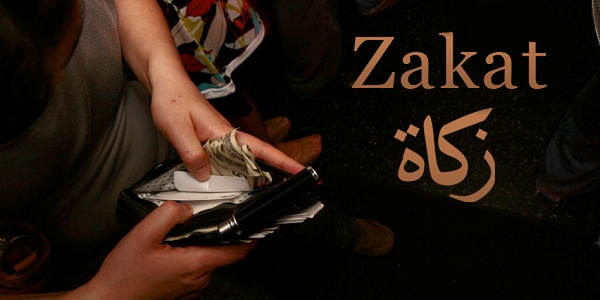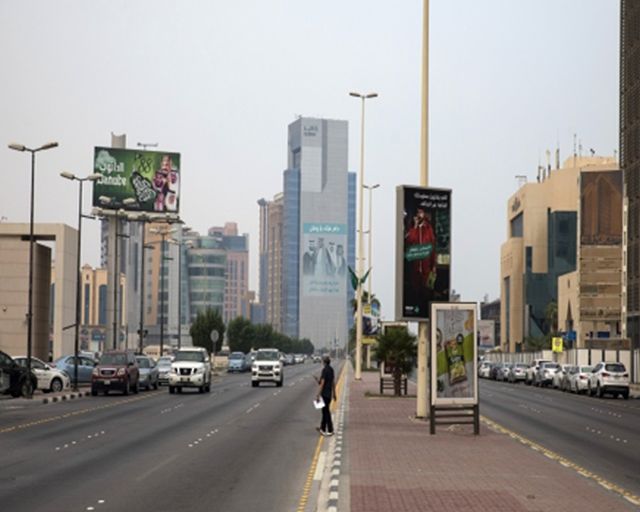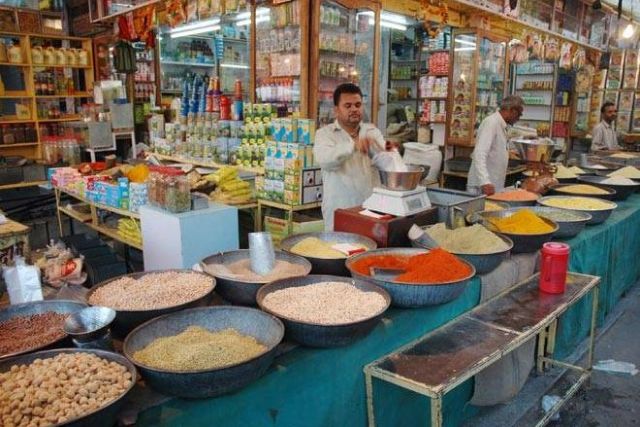
by admin | May 25, 2021 | Halal Industries, Islamic Finance, News
 By: Saif Alam Siddiqui
By: Saif Alam Siddiqui
As we have entered the last phase of the Holy month, let us refresh the concept again, Literally, zakat means to grow, it can be used as an alternative approach for capacity building to be more productive, thereby contributing more to the economy. With around 1.8 billion Muslims globally i.e 24.1% of global demography a properly managed Zakat system will be boon for the entire humanity and the best tools to eliminate poverty.
Besides poverty eradication, Zakat aims to eliminate greediness and encouraging socially oriented behavior, It is expected that the payment of zakat will purify the income of the payer, reconcile the hearts of payer and receiver, satisfy the basic needs of the poor and needy and solving the social problems such as poverty, unemployment, indebtedness and disparity.
Poverty alone cannot be just alleviated by income redistribution only, but it needs to include a comprehensive approach. Poverty has become an economic, social, and political issue all over the world particularly in third-world nations including many of the Muslim countries.
International organizations like the United Nations and the World Bank are working hard to eradicate poverty with all kinds of activities, programs, services, and policy developments, according to a UN declaration, poverty is defined as: “..denial of choices and opportunities, a violation of human dignity. It means lack of basic capacity to participate effectively in society. It means not having enough to feed and clothe a family, not having a school or clinic to go to; not having the land on which to grow one’s food or a job to earn one’s living, not having access to credit. It means insecurity, powerlessness and exclusion of individuals, households and communities. It means susceptibility to violence, and it often implies living on marginal or fragile environments, without access to clean water or sanitation”.
On the other hand, Islam defines poverty based on an individual fails to fulfill any of the five basic human requirements of life i) Religion ii) Physical self iii) Knowledge iv) Dignity and v) Wealth. Islam, being a religion of balance, views poverty as social and ideological problems. It is considered a social problem because the effects are felt in the society as a whole. Moreover, it is also an ideological problem as it affects the performance of one’s socio-religious obligation towards the community and Islam, and may even lead to kufr.
Furthermore, a hadith reported that Prophet Muhammad ﷺ has sought Allah’s refuge from poverty. “O, Allah! I seek refuge with You from laziness and geriatric old age, from all kinds of sins and from being in debt; from the affliction of the Fire and from the punishment of the Fire and from the evil of the affliction of wealth; and I seek refuge with You from the affliction of poverty, and I seek refuge with You from the affliction of Al-Messiah Ad-Dajjal. O Allah! Wash away my sins with the water of snow and hail, and cleanse my heart from all the sins as a white garment is cleansed from the filth, and let there be a long distance between me and my sins, as You made East and West far from each other.” (Hadith – Sahih Bukhari)
Consistent with the brotherhood concept in Islam, Muslims were strongly encouraged to look after the poor in their community. History proves that zakat is an effective tool to alleviate poverty as during the period of Umar bin Al Khattab and Umar bin Abdul Aziz poverty was completely eliminated. However, with the fall of the Islamic Empire and increasing European influence during the colonialism period, Zakat Institutions have lost their glory.
In general, there are two types of zakat, i) Zakat Al-Fitr zakat on oneself, It is a small amount that all Muslims are obliged to pay during Ramzan. and ii) Zakat Al-Mal or zakat on wealth, it is payable at any time of the year if a person’s annual income exceeds nisab.
Zakat is a concept referring to the redistribution of wealth prescribed by Allah to the deserving categories of people.
“The alms are only for the Fuqara’ (the poor), and Al-Masakin (the needy) and those employed to collect (the funds), and to attract the hearts of those who have been inclined (towards Islam), and to free the captives; and for those in debt; and for Allah’s Cause, and for the wayfarer (a traveller who is cut off from everything); a duty imposed by Allah. And Allah is All-Knower, All-Wise.” [Al-Quran 9:60]”
According to this verse, there are eight categories of people who are eligible to receive zakat:
- Al-Fuqara (The poor): Fuqara are the people who live below the poverty line and don’t have enough means to live a normal life like others.
- Al-Masakin (The needy): Masakin are extremely poor and needy people. These people don’t have any possessions or income.
- Zakat collectors: The people or institutions that are authorized to collect and distribute.
- Who converted to Islam: Those who are newly converted to Islam are eligible to receive zakat if they are needy.
- Freeing captives: Your zakat money can help slaves or illegally detained prisoners in freeing themselves and improve their living standards.
- Debtors: Given to pay off debts of someone who cannot repay on his own.
- In the path of Allah: These are the people who are fighting for Allah’s cause far away from their homes.
- Wayfarer (Travelers): A traveller who is left alone in a foreign land and is in need of money to get back to his destination or to fulfil his objective of travelling.
Although eight categories of beneficiaries have been mentioned in the Qur’an, it is not compulsory to divide the zakat fund equally among them. If all the categories require a similar amount of zakat fund, then it must be divided equally among them. However, if some categories require more zakat than the others, they can be given more money from the fund. It is left to the zakat institutions or agents to distribute the fund to those beneficiaries whose needs are greatest. However, it is generally believed that the main priority of zakat fund must be given to the first two categories; hardcore poor and poor.
In the Indian context, there are no centralized based Zakat institutions, therefore, the idea and vision of zakat are still not fulfilled, the beneficiaries are paid randomly at the individual level, therefore the potential benefits are not fulfilled.
Direct payment of zakat is acceptable especially for non-productive beneficiaries such as the disabled and elderly. On the other hand, zakat should be distributed in the form of capital finance to the poor and needy in order to encourage business activities among beneficiaries. In the long run, it is expected that the productive beneficiaries will be more independent, and able to support themselves and their families, thus escaping from poverty.
The obligation to pay zakat on wealth was received by the Prophet Muhammad ﷺ in 9 Hijri. Under the governance of Prophet Muhammad ﷺ zakat funds were collected and distributed by the appointed zakat collector (Amil), as one of the eligible categories, the Amil was given a portion of the zakat funds. the Amil used to go to the potential zakat payers properly assessed their zakat items and collected the amount due to them. Most of the Amil appointed by the Prophet ﷺ were retained by the first Caliph Abu Bakar (RA) and stressed the importance of zakat payment, He said: “If they withhold giving zakah even a little rein of a camel or a small baby sheep (that is due on them) I will fight them for it zakat is an obligation on properties. By Allah, I will fight whoever discriminates between prayers and zakat”.
Later, under the reign of the second caliph, Umar bin Al-Khattab (RA), a new method of zakat collections was introduced, Known as Al’Ashir, He set several checkpoints on major highways, especially those coming from other countries. An appointed tax collector was allocated at each checkpoint and zakat was collected from the Muslim traders. On the other hand, the non-Muslim traders were required to pay taxes on imports. And this practice continued throughout the early history of the Islamic government. Besides Al’Ashir, Umar also introduces the concept of Bait-al-Mal or Public Treasury in order to manage the zakat and waqf funds. It is believed that under the good governance of Umar, there was so much prosperity that often it was hard to find an eligible recipient of zakat.
As witnessed in History, there is evidence that zakat is effective in eliminating poverty, during the period of Umar bin Al-Khattab 13 to 22 Hijri and Umar bin Abdul Aziz 99 to 101 Hijri poverty was completely eliminated. During this period zakat money could not be distributed due to the non-existence of poor people. Under the ruling of Umar bin Al-Khattab, the Yemen governor, Mu’adh bin Jabal sent one-third of the zakat collection to Umar bin Al-Khattab. Umar rejected the fund by saying, “I sent you to take from the rich and render it to the poor among them”. Mu’adh later claimed that he could not find anyone who deserved the zakat money. In the following year, Mu’adh sent half of the zakat collection and a similar conversation took place between them. Later, in the third year, he sent all the zakat collection to Umar and said, find a single person who needs from me anything of the zakat”.
A similar scenario was found during the reign of Umar bin Abdul Aziz (Umayyads government) where an Egypt governor sent him a letter asking him on what to do with the proceeds of zakat funds as no deserving poor and needy was found in Egypt. According to Umar bin Abdul Aziz, the funds then shall be used to, buy slaves and set them free, build rest areas on the highways and help young men and women to get married. Thus, it seems that practically, zakat is efficient in combating poverty if being managed properly.
This miracle is also possible in this century too just need to learn from their governance and an honestly managed centralized Zakat institution. InshAllah the time of Umar will come.

by admin | May 25, 2021 | Opinions
 By Saif Alam Siddiqui for Maeeshat Media,
By Saif Alam Siddiqui for Maeeshat Media,
The kingdom’s Vision 2030 to create more jobs for Saudis in the private sector rebound and squeeze the economy, the Washington Post reported that a mass evacuation of foreign workers had initially encouraged to help secure employment for its citizens, is now adding to its trouble over an economic decline.
A project by Crown Prince Mohammed bin Salman (MBS) to create more jobs for Saudi citizens in the private sector has flopped and added burden on the economy.
About 1.1 million expatriate left the kingdom workforce from early 2017 to the third quarter of 2018, coinciding with a fee on dependents of expatriate workers and restrictions against foreign workers in several sectors, last year Saudi officials were reportedly considering lifting or easing the fees imposed on expatriate workers because of the harm of the policy was causing the economy, but the fees remain the same.
As the expatriate workers have left, young Saudis have not taken the jobs left open, for example in low-wage construction or retail, and the unemployment rate has soared as high as 12.9 per cent in the past two years.
The worker departure has added to anxiety, as Saudi leaders struggle to attract foreign investment after an anti-corruption crackdown by MBS that included the arrests of hundreds of business executives and public officials. In a sign that it is responding to investor anxiety, Saudi Arabia held its second major investor conference in less than four months and is expected to draw millions of dollars in investment for mining, energy and various sectors.
Reuters reported that the European Commission recently added Saudi Arabia to an EU draft list of countries that pose a threat to the bloc because of lax controls against terrorism financing and money laundering. The move marked a disappointment for Riyadh at a time when it attempts to strengthen its international reputation and encourage foreign investors to participate in a huge economic transformation plan.

by admin | May 25, 2021 | Corporate, Corporate Buzz, Investing, Markets, Technology
 New Delhi : While the government is in the process of devising institutional measures to protect consumers’ personal data, an advocacy group has written to Union Law Minister Ravi Shankar Prasad against the limited scope of the legislation in work, which, it said, will “harm the overall globalization of the economy” in the long run.
New Delhi : While the government is in the process of devising institutional measures to protect consumers’ personal data, an advocacy group has written to Union Law Minister Ravi Shankar Prasad against the limited scope of the legislation in work, which, it said, will “harm the overall globalization of the economy” in the long run.
Consumer VOICE on Sunday said that though the move may seem right in the short run, it eventually will prove to be detrimental to the economy.
The government had earlier this year brought out the draft of data protection bill, an effort towards defining the legal boundaries of the use of personal data and bringing the matter under legislature.
“The bill in its current form will drastically hinder such progress and negatively impact consumer interests in garnering benefits of these global technological innovations, access to global best practices and options, economies of scale, knowledge base and opportunities,” the advocacy group said in its letter to Prasad, who is also the Minister of Electronics and Information Technology.
The bill, if passed in its present form, may even cause to wipe out nearly one per cent of the Gross Domestic Production (GDP) of the country, the letter said.
“An international report has quantified harm to Indian economy and states that the potential impact on India’s GDP may be -0.8 per cent, domestic investments -1.4 per cent and the loss per worker may be equivalent to 11 per cent of the average monthly salary,” it read.
The letter said that restrictions on cross-border flow of data will have “far reaching negative consequences”, as will the data localisation, which will deny the citizens the access of “innovative offerings”.
—IANS

by admin | May 25, 2021 | Markets, Opinions, Technology
 By Amit Kapoor,
By Amit Kapoor,
The world stands on the brink of the Fourth Industrial Revolution, powered by a wide range of new technology breakthroughs — Artificial Intelligence, Machine Learning, advanced robotics, Internet of Things, cloud computing and 3D printing — and the revolution is expected to result in major changes in the labour market globally by reducing the demand for middle-skilled workers doing repetitive tasks, and increasing the demand for more highly-skilled workers and also low-skilled workers doing non-routine work.
While many developed countries, such as the US, Japan and several European economies, are already experiencing this labour market polarisation, the market is also hollowing out in many developing countries — although at a rate slower than the developed world (World Development Report, 2016).
In India’s case, this polarisation can be seen in the organised manufacturing sector, where the share of high-skilled occupations in total manufacturing employment increased by more than three percentage points, while the share of middle-skilled jobs decreased by 6.3 percentage points from 1993-94 to 2011-12. Looking at the impact of technological progress on various manufacturing industries in India, capital-intensive industries — automobile manufacturing, for instance — have a greater probability of adopting advanced automation and robotic technologies, compared to the labor-intensive manufacturing industries such as textile, apparel, leather, and footwear, and paper manufacturers.
Further, in the services sector, particularly in the IT sector, e-commerce, banking and financial services and health care services, there is a huge potential for automation technologies, which would increase the demand for skilled workers and reduce the demand for middle-skilled workers.
However, in India, over 80 percent of the working population is engaged in low-skilled jobs in the unorganised sector. These workers aspire to join the middle-skilled workforce in the organised sector to raise themselves from poverty. However, the changing nature of work due to technology advancements in the organised sector prevents their upward mobility and any improvement in their incomes.
Addressing the challenges induced by technological advancements requires reforms in India’s higher education system. The institutes of higher learning should redesign the course curriculum by understanding the key market transitions amidst the technological advancements. This would enable the country to create a workforce which could be placed in the positions demanded by the companies in the digital era and thus bridge the skill gap in the labour market.
However, looking at the current state of higher education in India, one can perceive that it is not just the quality of the system which needs to be improved, there is also much to be done in terms of the number of students enrolled in institutes of higher learning and heterogeneity existing in access to higher education based on socio-economic status, gender and also region. The Gross Enrollment Ratio (GER) in tertiary education in India is 26.9 per cent, which is lower than that of China (48.4 per cent), Indonesia (27.9 per cent) and the Philippines (35.3 per cent), among others.
Further, the GER in India for the male population is 26.3 per cent and 25.4 per cent for females. The GER also varies across different social groups. For the Scheduled Castes it is 21.8 per cent and 15.9 percent for the Scheduled Tribes.
There are also wide variations in the number of colleges for higher education across different states in India, with the lowest number of seven colleges in Bihar for every 0.1 million of eligible population to 51 in Telangana and Karnataka. The top eight states in terms of highest number of colleges in India are Uttar Pradesh, Maharashtra, Karnataka, Rajasthan, Andhra Pradesh, Tamil Nadu, Gujarat, and Madhya Pradesh, which have 28 or more colleges per 0.1 million of the population.
The disparity in the distribution of the colleges is also seen across different districts in these states, with the top 50 districts having about 32.6 per cent of the colleges.
In addition to the inequalities existing in the access to institutions for higher education, another issue with the state of higher learning in India is that a majority of the students are enrolled in undergraduate programmes, compared to masters and the doctoral programmes. Moreover, at the undergraduate level, there is a low pass out rate of the students — of the 2,90,16,350 students enrolled, the number of pass outs have been 64,19,639 in 2017.
Given that the Indian system of higher education faces multiple challenges of low gross enrollment in its colleges and universities, with most students settling on undergraduate studies, along with various socio-economic inequalities existing in access to higher learning, it is imperative for the country to address these issues.
Further, emphasis must be given on increasing the number of students who pass out of colleges/universities, along with increasing enrollment numbers.
The technology-induced skill gap which the Indian economy is facing across its different sectors is bound to increase with the given higher education system. The change has to be brought from outside the existing constructs. Improvement in the teaching methodology from the traditional lecture courses, accreditation of online courses and redesigning the course curriculum to make it industry-relevant are some of the ways the technology-led changes in the labor market can be dealt with.
(Amit Kapoor is chair, Institute for Competitiveness, India. The views expressed are personal. He can be contacted at amit.kapoor@competitiveness.in and tweets @kautiliya. Deepti Mathur, senior researcher at large with Institute for Competitiveness, has contributed to the article)
—IANS

by admin | May 25, 2021 | Business, Commodities, Commodities News, Economy, Markets, News, SMEs
 New Delhi : Retail inflation in India touched the 5 per cent mark in June, compared to 4.87 per cent in May, even as industrial output in May grew at 3.2 per cent over the same month last year but declined as compared to rise of 4.9 per cent in April mainly on account of a decline in manufacturing, official data showed on Thursday.
New Delhi : Retail inflation in India touched the 5 per cent mark in June, compared to 4.87 per cent in May, even as industrial output in May grew at 3.2 per cent over the same month last year but declined as compared to rise of 4.9 per cent in April mainly on account of a decline in manufacturing, official data showed on Thursday.
As per data released by the Central Statistics Office (CSO), the average annual rate of inflation as per the consumer price index (CPI) in June last year was 1.46 per cent.
The consumer food price index (CFPI) in June at 2.91 per cent, however, softened as compared to the 3.10 per cent of the previous month. The inflation in vegetables dropped to 7.8 per cent from 8.04 per cent in the previous month.
The CPI for the ‘fuel and light’ category rose to 7.14 per cent in June, from 5.8 per cent in May.
The higher inflation last month comes in the backdrop of rising global crude oil prices which have been ruling at over $75 a barrel.
Breaking the cycle of interest rate cuts begun in January 2015, the Reserve Bank of India (RBI), at its last monetary policy review in June, raised its repo rate by 25 basis points to 6.25 per cent citing inflationary concerns.
It also revised upwards its inflation projection to 4.8-4.9 per cent for the first half of the current fiscal.
The fall in the Index of Industrial Production in May was caused by a sharp slowing in the growth of the manufacturing sector which registered a growth of 2.8 per cent, as compared to 5.2 per cent in April.
“The industry group ‘Other manufacturing’ has shown the highest negative growth of (-) 31.9 percent followed by (-) 15.6 percent in ‘Manufacture of tobacco products’ and (-) 12.8 percent in ‘manufacture of wearing apparel’,” a CSO statement said.
“The industry group ‘Manufacture of computer, electronic and optical products’ has shown the highest positive growth of 27.0 per cent followed by 21.1 percent in ‘Manufacture of motor vehicles, trailers and semi-trailers’ and 13.2 percent in ‘Manufacture of furniture’.”
Mining output in May at 5.7 per cent in May improved marginally over the 5.1 per cent in April.
Electricity production in the month under consideration rose to 4.2 per cent over the 2.1 per cent in April.
The cumulative IIP growth for the period April-May 2018 over the corresponding period of the previous year stands at 4 per cent, the statement added.
The IIP for April has been revised to 4.8 per cent, from the earlier figure of 4.9 per cent.
Commenting on the IIP data, Deloitte India Lead Economist Anis Chakravarty said in a statement: “The recent easing came largely on the back of manufacturing, while improvements were made across mining and electricity. That said, the movement in manufacturing remains largely steady which bodes well for economic growth, especially when the economy remains at risk from global changes.”
“A clear positive was on food price momentum that remained muted… Although core remains elevated that may keep RBI on guard. We have not yet removed the ‘risk’ of one more rate hike,” said Yes Bank Group President Shubhada Rao.
—IANS






